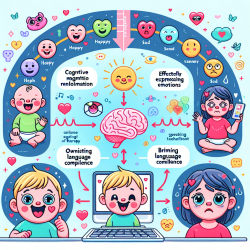Introduction
In the realm of health research, the integration of sex and gender analysis has emerged as a critical component for achieving more precise and equitable outcomes. The research article "Better Science with Sex and Gender: Facilitating the Use of a Sex and Gender-Based Analysis in Health Research" by Johnson, Greaves, and Repta (2009) offers a comprehensive guide for researchers to incorporate these crucial elements into their work. This blog aims to inspire practitioners, particularly those in speech-language pathology, to harness the insights from this research to enhance their practice and contribute to better health outcomes for children.
The Importance of Sex and Gender Analysis
Understanding the distinct roles of sex and gender in health research is paramount. While sex refers to biological differences, gender encompasses the social and cultural influences that shape health behaviors and outcomes. By integrating sex and gender analysis, researchers can avoid common pitfalls, such as conflating the two concepts, which can lead to incomplete analyses and missed opportunities for effective interventions.
Implementing Sex and Gender-Based Analysis (SGBA)
The research article outlines three approaches for incorporating SGBA into health research:
- Revisit Original Studies: Practitioners can apply SGBA to existing data, reanalyzing it to uncover sex and gender differences that may have been overlooked. This retrospective approach can provide valuable insights without the need for additional data collection.
- Augment Existing Research Plans: For studies in progress, researchers can enhance their designs by incorporating sex and gender-sensitive measures. This proactive step ensures a more comprehensive analysis and can reveal important differences that inform treatment and policy decisions.
- Incorporate SGBA from the Outset: Designing studies with SGBA in mind from the beginning allows for a more holistic understanding of health issues. This approach is particularly beneficial for new research projects, enabling researchers to explore the interplay of biological and social factors from the start.
Challenges and Opportunities
While the integration of sex and gender analysis presents challenges, such as the need for standardized definitions and measurement tools, it also offers significant opportunities for advancing health research. By adopting SGBA, practitioners can contribute to more accurate and equitable health outcomes, ultimately benefiting children and other vulnerable populations.
Conclusion
Incorporating sex and gender analysis into health research is not just a methodological enhancement; it is a scientific and ethical imperative. By embracing these concepts, practitioners can drive innovation and improve health outcomes, particularly for children who stand to benefit the most from precise and equitable research practices.
To read the original research paper, please follow this link: Better science with sex and gender: Facilitating the use of a sex and gender-based analysis in health research.










